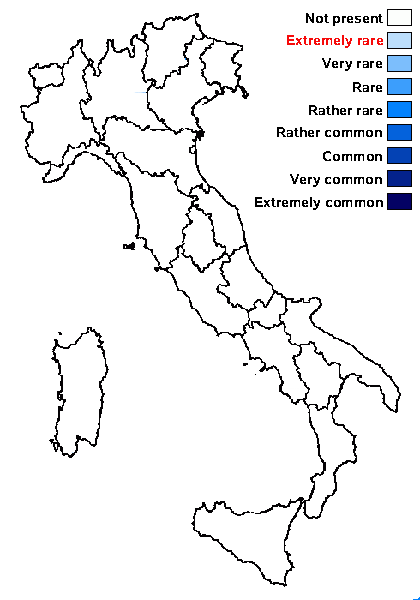Verrucaria trabicola Arnold ex Servít
Stud. Bot. Čechoslov. 11: 126, 1950
Synonyms:
Distribution:
Description: Thallus crustose, episubstratic, pale brownish grey, continuous, thin, uneven, without a prothallus. Upper cortex 15-20 µm thick, the cells 3-5 µm wide; algal layer 20-50 µm thick; mycobiont portion (sub)paraplectenchymatous, of 3-5 µm wide cells, without a true medulla. Perithecia black, 0.2-0.25 mm wide, hemispherically projecting, laterally covered by thallus, the apical part naked. Involucrellum hemispherical, extending down to exciple-base level, diverging at base, c. 40 µm thick; exciple subglobose, brownish near the ostiole, otherwise colourless, c. 20 µm thick; hamathecium of c. 20 µm long periphyses and periphysoids, interascal filaments absent; hymenial gel hemiamyloid. Asci 8-spored, clavate, I-, fissitunicate, the wall thickened above, with an ocular chamber, dehiscent by extrusion of an endotunica to form a delicate rostrum, Verrucaria-type. Ascospores 1-celled, hyaline, ellipsoid, 19-24 x 9-11 µm. Photobiont chlorococcoid. Spot tests: K-, C-, KC-, P-, UV-. Chemistry: without lichen substances.Note: a rare, poorly known species described from Switzerland and known from a few stations in Central and Northern Europe (also reported from North America), growing on bark and wood. To be looked for in the Italian Alps.
Growth form: Crustose
Substrata: bark and lignum
Photobiont: green algae other than Trentepohlia
Reproductive strategy: mainly sexual
Poorly known taxon in need of further study

Predictive model
Growth form: Crustose
Substrata: bark and lignum
Photobiont: green algae other than Trentepohlia
Reproductive strategy: mainly sexual
Poorly known taxon in need of further study

Predictive model

